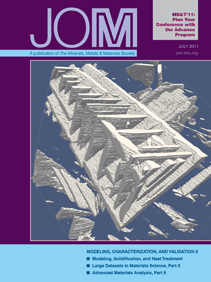VISIT THE
JOM COVER GALLERY
|
|
Understanding University Patent Policies
Arnold B. Silverman Unlike industrial scientists and engineers
who generally are hired to invent and assign all worldwide rights
in their inventions to their employer without any residual rights
to additional compensation, university personnel are in a different
position. The prime focus of universities is to educate and, in some
instances, to conduct technical research.
Most university intellectual property policies embrace faculty, staff,
and students and govern both patentable and unpatentable new technology
within the area of focus of the individual or with respect to which
substantial use is made of university resources such as personnel,
equipment, and time.
In general, worldwide ownership of developments vests with the university,
which has sole discretion to determine whether a patentability investigation
will be conducted, whether patent applications will be filed, and
whether the technology and related intellectual property rights will
be sold or licensed to third parties.
Restrictions are typically placed on the individuals creating the
developments in order to avoid forfeiture of patent rights. A U.S.
patent application must be filed within one year after the first publication
offering an invention for sale or commercial use. Most university
policies state that the university has the right to cause publication
to be withheld up to a specified maximum period, which may be on the
order of four to six months. Similar restrictions may be placed on
other activities, which might result in forfeiture of patent rights.
To the extent to which an individual feels that his or her invention
is so unrelated to their areas of university responsibilities that
an assignment of ownership to the university would not be within the
letter or spirit of the policy, provisions are made for a request
of waiver of rights on the part of the university.
One major departure from general industrial practices involves the
sharing of consideration received for licensing or sale of rights
in an invention. In industry, an individual having research or development
responsibilities is generally regarded as having been “hired
to invent,” with the compensation received being viewed as consideration
for creation of the new technology and assignment of rights to the
employer. In the university environment, a very different formula
is applied in connection with funds received from the marketing of
intellectual property rights. Typically, the initial funds received
are applied to reimburse the university for the cost of the evaluation
and protection of intellectual property rights in the specific invention.
After that, there is a sharing of income. The inventor or inventors
receive a fixed percentage of that income, about 20–30%. Duplicate
payments, of course, are not made. For example, if the inventor’s
share of income in a specific case were $10,000, a sole inventor would
receive this entire sum, while two joint inventors would each receive
$5,000. In this context, it is important to bear in mind that the
patent law requires a good faith determination of actual inventorship
based upon the claims appearing in a patent application or patent.
In addition, a percentage of the income is typically directed toward
a fund to provide resources for evaluating and protecting future inventions.
There is frequently a provision giving a percentage of the income
back to the inventor’s department for research, either on the
same technology or other technology.
Another issue covered by a patent policy is what happens if an inventor
leaves the university. Typically, the inventor’s share of income
continues to be paid to the inventor, but there is no portability
of funds going back to the inventor’s department and, as a result,
that remains with the department.
In those instances where an individual is not “hired to invent”
as at least part of his or her responsibilities, or the invention
relates to subject matter totally unrelated to the individual’s
university responsibilities, but nevertheless significant use of university
resources has been made, the university may obtain a “shop right.”
This means that the university has a personal, nontransferable right
to use the invention, but does not own the invention or any patents
that may issue therefrom.
Many policies provide that even if the university elects to maintain
the technology as a trade secret, the university patent policy will
govern.
In summary, while there are substantial variations among the various
university patent policies, it is important to be aware of the substantial
differences that exist between university policies in general and
industrial or other employment arrangements, whether the latter are
governed by law or contract.
Arnold B. Silverman is chair of the Intellectual Property
Department and a member of Eckert Seamans Cherin & Mellott, LLC
in Pittsburgh, Pennsylvania.
For more information, contact A.B. Silverman at Eckert
Seamans Cherin & Mellott, LLC, 600 Grant Street, 44th Floor, Pittsburgh,
Pennsylvania 15219; (412) 566-2077; fax (412) 566-6099; e-mail abs@escm.com.
|

